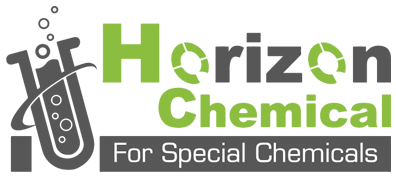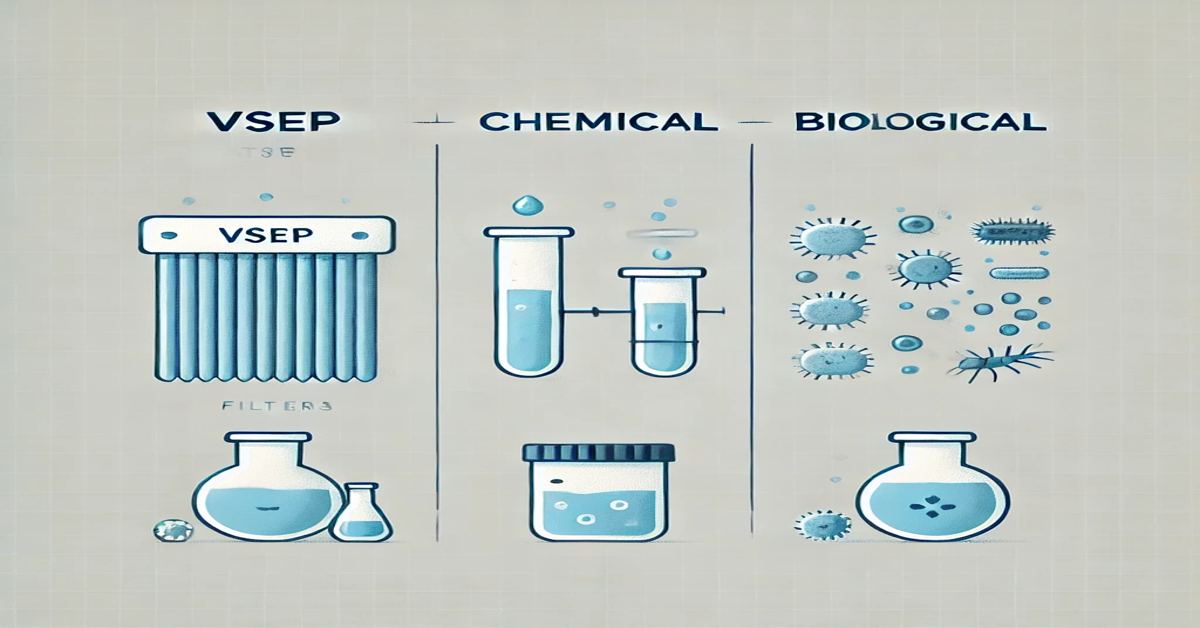Water, the lifeblood of industries and communities, holds unparalleled significance. Yet, its journey from source to tap isn’t without hurdles. Enter water treatment chemicals, the unsung heroes safeguarding water quality. In this in-depth guide, we voyage through the world of these chemicals, unraveling their types, functions, and the intricate process of selection.
Table of Contents
Demystifying Water Treatment Chemicals**
Water treatment chemicals form a multifaceted toolkit, each compound tailored to conquer specific challenges. From disinfecting to purifying, they play a pivotal role in ensuring water meets stringent quality standards.
The Role of Water Treatment Chemicals
The terrain of industrial water treatment is diverse, with each water source demanding a tailored approach. This is where water treatment chemicals play a pivotal role, addressing unique concerns and ensuring water quality isn’t compromised. Let’s delve into the specific contributions of various key chemicals in this intricate process:
- Coagulants
Coagulants are the architects of clarity in water treatment. They orchestrate the aggregation of fine particles, colloids, and impurities, transforming them into larger, manageable flocs that can be efficiently removed from the water. These chemicals neutralize the repelling forces between particles, allowing them to come together and form the larger aggregates. Aluminum-based coagulants, such as aluminum sulfate (alum) and poly aluminum chloride (PAC), are commonly used for this purpose. By binding the suspended particles, coagulants ensure efficient removal during subsequent treatment steps.
- Disinfectants
Disinfectants stand as the guardians of public health, eradicating pathogens that lurk within water sources. Chlorine and chloramines are frequently employed to combat microbial contaminants, effectively neutralizing bacteria, viruses, and other harmful microorganisms. These chemicals break down the cellular structures of pathogens, rendering them inactive and harmless. The dosing of disinfectants is meticulously controlled to strike a balance between thorough disinfection and minimizing the formation of potentially harmful disinfection by-products.
- Corrosion Inhibitors
In the delicate dance between water and distribution systems, corrosion inhibitors emerge as protectors against the degradation of infrastructure. These chemicals form a protective barrier on metal surfaces, preventing the corrosive interaction between water and pipes. By curbing corrosion, inhibitors extend the lifespan of pipelines, pumps, and other critical components, ensuring the integrity of water distribution systems. Organic and inorganic corrosion inhibitors are tailored to the specific materials used in a system, safeguarding infrastructure from deterioration.
- pH Adjusters
pH adjusters are the conductors of equilibrium, fine-tuning the delicate pH balance of water. The pH of water influences various chemical reactions and the solubility of minerals. By adjusting the pH, treatment professionals can optimize the efficiency of coagulation, flocculation, and disinfection processes. Acidic or alkaline conditions can be modified using pH adjusters such as sodium hydroxide (caustic soda) or sulfuric acid. This ensures that water remains within the ideal pH range for efficient treatment, preventing scaling, corrosion, and other undesirable effects.
In the symphony of water treatment, each chemical takes on a distinct role, harmonizing to create the masterpiece of clean, safe water. As industries evolve, regulations tighten, and the demand for sustainable practices grows, the role of these chemicals becomes more vital than ever. They stand as the guardians of water quality, ensuring that this invaluable resource remains pure and accessible for generations to come.
Deciphering Coagulation and Flocculation**
The choreographed dance of coagulation and flocculation orchestrates the aggregation of dispersed particles. This process, facilitated by coagulants and flocculants, transforms fine particles and colloids into larger flocs, making them easier to remove through processes like settling.
In the realm of water, particles bear electrical charges that sustain their dispersion due to repulsion. The zeta potential, a key parameter, quantifies this charge. The introduction of substances like aluminum ions and cationic polymers disrupts this balance, leading to charge neutralization and floc formation.
Exploring Coagulant Types and Functions**
Coagulants can be classified into two main types: inorganic and organic. Each type thrives under specific conditions that influence their efficacy. Inorganic coagulants, with their optimal pH ranges, facilitate the precipitation of metallic ions as hydroxides. Stirring enhances interactions between inorganic coagulants and suspended particles, promoting charge neutralization.
On the other hand, organic coagulants, boasting higher ionic valencies, excel in charge neutralization. Some even extend their capabilities to react with dissolved anionic organic compounds, forming water-insoluble salts. The interplay between specific organic coagulants and pH levels underscores the intricate dynamics of coagulation.
PAC vs. Aluminum Sulfate: A Case Study in Efficiency**
The case study presented by Horizon Water Solutions sheds light on the realm of efficiency in water purification. Faced with the challenge of achieving water clarity fit for cooling towers and reverse osmosis units, the company’s experiment revolved around traditional alum (aluminum sulfate) and Poly Aluminum Chloride (PAC).
The results were astonishing – PAC outperformed alum with just an eighth of the dosage. This remarkable difference translated to an astounding 60% reduction in costs, showcasing the potential of innovative approaches to water treatment. This achievement resonated with sustainable development goals, underscoring the importance of optimizing practices for both economic and environmental benefits.
Leveraging Polymer Flocculants for Optimal Efficacy**
In the realm of coagulation and flocculation treatment, non-ionic and anionic high molecular weight polymer flocculants play a vital role. These polymers efficiently bring together micro-flocs that have been charge-neutralized by coagulants, forming macro-flocs through bridging reactions.
The molecular weights, ionic properties, and degrees of cross-linking and branching within the polymer molecules are vital factors influencing the flocculation effects of polymer flocculants. The significant expansion of their volume is essential for the creation of polymer loops adsorbed onto micro-flocs, enabling the formation of macro-flocs through bridging reactions.
Deciphering the Impact of Coagulants on Polymer Flocculants**
The interaction between coagulants and polymer flocculants is a dynamic dance, where their compatibility influences treatment outcomes. The dosage of coagulants affects the adsorption of polymer flocculants onto suspended particles. Nonionic polymers exhibit better performance at lower pH levels or when higher dosages of coagulants are used.
Conversely, anionic polymers excel at higher pH levels or when lower coagulant dosages are employed. The intricate balance between their behaviors showcases the nuanced interplay between coagulants and polymer flocculants, highlighting the importance of tailored treatment strategies.
Guiding the Procurement Process: Your Navigational Table**
Embarking on the journey to procure water treatment chemicals is no straightforward task. It’s a labyrinthine process that requires meticulous planning and execution. Here’s your definitive guide table for navigating through this intricate process:
| Step | Consideration | Description |
| 1 | Identify Water Composition | Begin by analyzing the composition of your water source. What impurities, minerals, and contaminants are present? Understanding the composition is the first step towards selecting the right treatment chemicals. |
| 2 | Define Treatment Objectives | Establish specific treatment goals. Are you aiming to remove specific contaminants, improve clarity, or adjust pH levels? Clear objectives will guide your chemical selection process. |
| 3 | Select Appropriate Chemicals | Based on the identified composition and treatment goals, choose chemicals tailored to your specific requirements. Different chemicals excel at addressing different issues. |
| 4 | Determine Dosage and Application | Calculate the precise chemical dosage needed and the most effective application methods. This ensures that the treatment chemicals work optimally without waste. |
| 5 | Ensure Compatibility with Systems | Verify that the chosen chemicals are compatible with your existing water treatment systems. Some chemicals may react negatively with certain materials. |
| 6 | Evaluate Environmental Impact | Assess the potential ecological consequences of the selected chemicals. Consider factors like biodegradability, toxicity, and long-term effects on the environment. |
| 7 | Partner with Reputable Suppliers | Collaborate with trusted chemical suppliers who can provide high-quality, reliable products. Their expertise can further enhance the effectiveness of your treatment process. |
Championing Sustainability: Horizon Water Solutions’ Triumph**
The
journey towards sustainability in water treatment takes center stage with Horizon Water Solutions’ success story. A petrochemical company grappling with the challenge of clarifying water faced substantial costs associated with traditional methods. However, Horizon’s innovative approach leveraged advanced chemical coagulation, leading to a remarkable 75% reduction in operating costs.
The integration of chemical coagulation into the treatment process not only enhanced efficiency but also improved the bottom line. This triumph underlines the potential of sustainable approaches in water treatment, aligning with environmental goals and economic optimization.
**Exploring Disinfection Strategies: Chemical Guardians of Purity**
Disinfection stands as the final frontier in water treatment, ensuring water’s safety before it reaches our taps. Chemical disinfectants like chlorine, chloramines, and ozone play a pivotal role in neutralizing pathogens and safeguarding public health. The dosage, contact time, and residual management of these chemicals are meticulously tailored to ensure effective disinfection while minimizing potential by-products.
**Harnessing the Potential of Advanced Technologies**
The evolution of water treatment chemicals is intertwined with technological advancements that enhance precision, efficiency, and sustainability. Modern treatment processes leverage cutting-edge technologies to optimize chemical dosage, monitor water quality in real-time, and even automate treatment operations.
**Automated Chemical Dosage Systems**
Automation has revolutionized chemical dosing in water treatment. Automated chemical dosage systems utilize sensors and controllers to precisely measure water quality parameters and adjust chemical dosages accordingly. This dynamic approach ensures optimal treatment outcomes while minimizing chemical waste.
**Real-time Monitoring and Control**
Real-time monitoring systems continuously assess water quality parameters, providing instant feedback on treatment efficacy. This proactive approach empowers water treatment professionals to make informed decisions promptly, mitigating potential issues before they escalate.
**Predictive Analytics and AI**
The integration of predictive analytics and artificial intelligence (AI) augments water treatment’s predictive capabilities. AI algorithms analyze historical data and real-time inputs to forecast water quality trends, optimizing chemical dosage and treatment strategies. This intelligent approach enhances efficiency and reduces chemical consumption.
**Innovations in Chemical Delivery: Safer, Smarter, Sustainable**
The safe delivery of water treatment chemicals is pivotal to both worker safety and treatment efficacy. Innovations in chemical delivery systems focus on minimizing risks, reducing environmental impact, and ensuring accurate chemical dosing.
**Encapsulated Chemicals**
Encapsulated chemicals are designed to dissolve gradually, releasing the active compound over an extended period. This controlled release enhances chemical utilization efficiency and reduces the frequency of chemical additions.
**Smart Chemical Feeders**
Smart chemical feeders are equipped with advanced sensors and communication capabilities. These feeders can remotely monitor chemical levels, detect potential issues, and even adjust dosages based on real-time water quality data.
**Bulk Delivery and On-Site Generation**
Bulk delivery of chemicals minimizes packaging waste and transportation emissions. On-site generation systems produce chemicals on-demand, reducing storage requirements and enhancing freshness and effectiveness.
**Championing Sustainable Practices**
The pursuit of sustainability is an imperative that resonates across industries, and water treatment is no exception. Sustainable practices encompass not only the selection of environmentally friendly chemicals but also the optimization of treatment processes to minimize resource consumption.
**Green Chemistry Approaches**
Green chemistry principles guide the development and selection of chemicals with minimal environmental impact. Water treatment chemicals adhering to these principles prioritize biodegradability, reduced toxicity, and efficient resource use.
**Energy-Efficient Treatment Processes**
Energy-efficient treatment processes minimize operational costs and reduce the carbon footprint. Technologies such as membrane filtration, advanced oxidation, and energy recovery systems exemplify this commitment to sustainable practices.
**Circular Economy Initiatives**
Circular economy initiatives emphasize resource efficiency by reusing and recycling chemicals and by-products. This approach not only reduces waste but also conserves valuable resources and contributes to a more sustainable water treatment ecosystem.
**Safeguarding Water’s Precious Legacy**
In the symphony of water treatment chemicals, each compound plays a unique role, harmonizing to create the masterpiece of clean, safe water. As industries evolve, regulations tighten, and sustainability becomes paramount, the role of these chemicals grows ever more critical.

The journey through the intricate landscape of water treatment chemicals reflects our dedication to preserving water’s precious legacy. With science as our guide, innovation as our compass, and sustainability as our purpose, we stand as stewards of this invaluable resource, ensuring its purity for generations to come.
—



